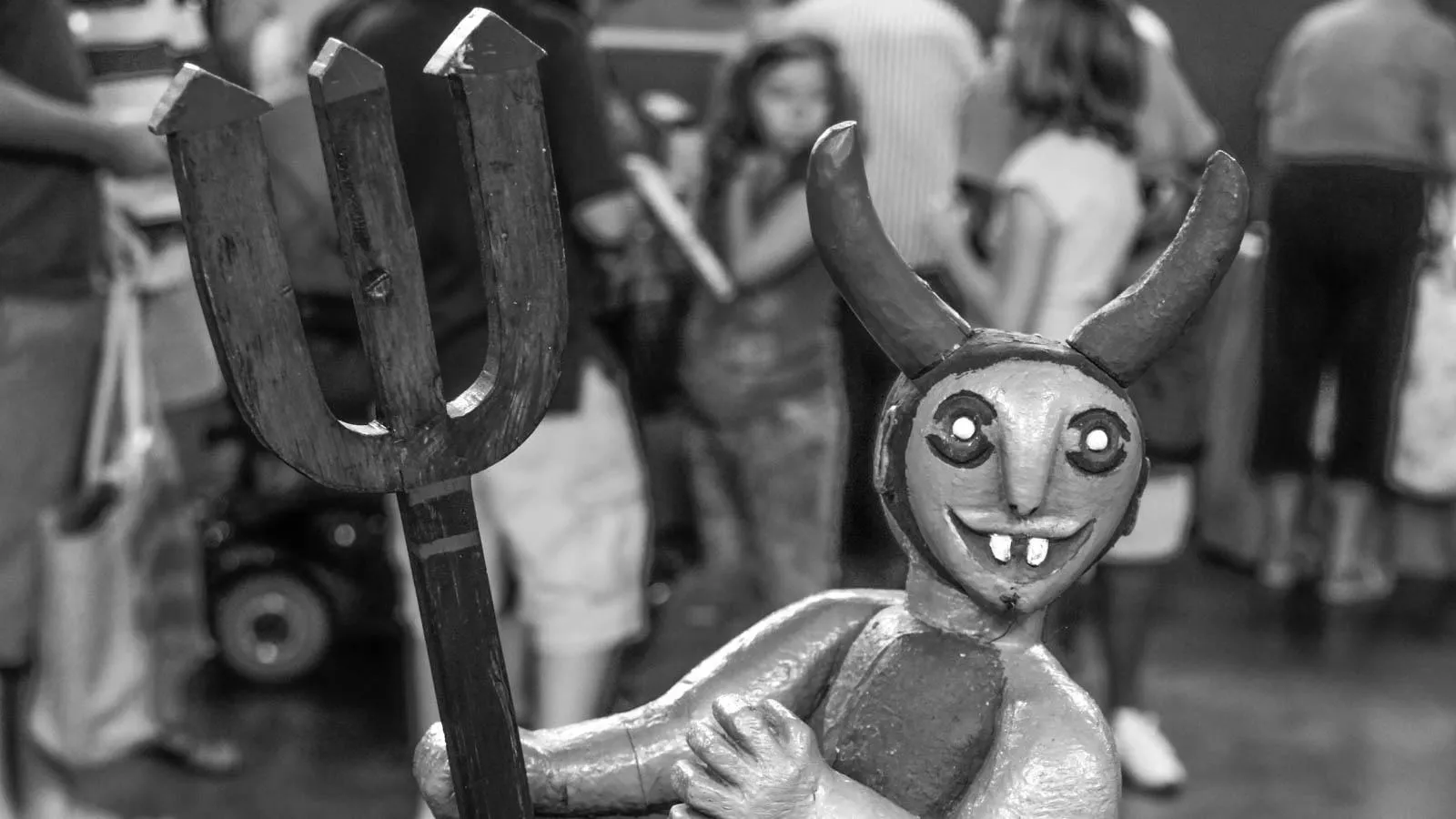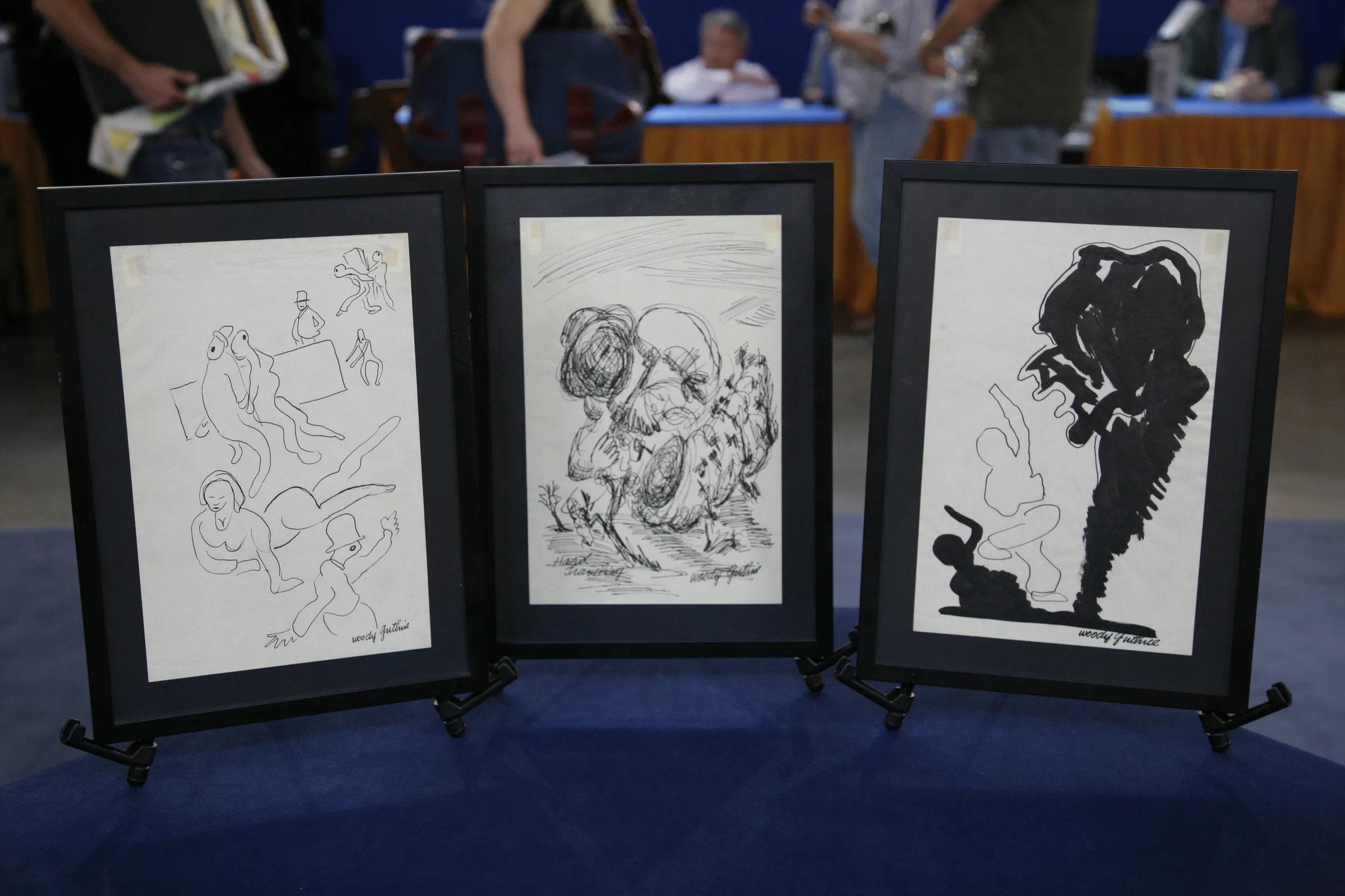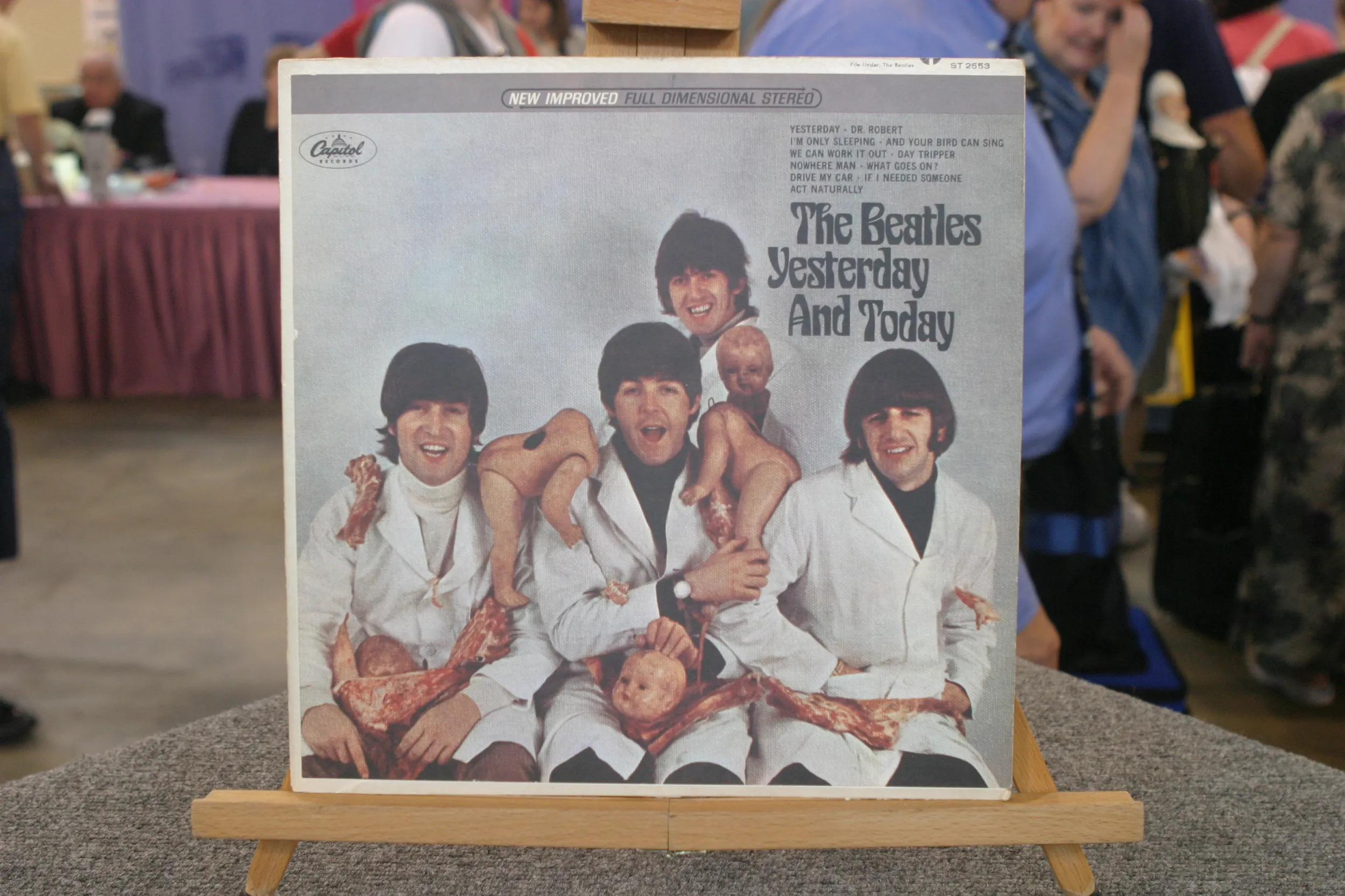GUEST: I know there's an artist by the name of Leonora Carrington and that she lived in Mexico. Originally she came from Europe, but that she came to Mexico after the Second World War. Much more than that I don't know, except I know that she was a surrealist.
APPRAISER: Surrealism is understood most prominently by the work of Salvador Dalí, someone like that, who has these images of the imagination and dreams and in some cases nightmares, which may apply to what we have here. Do you know about her background at all?
GUEST: I believe she was born in England. I read somewhere that she painted in her early 20s and that she was the mistress of Max Ernst.
APPRAISER: Right. She did run off with Max Ernst. She's a student and then ran off to France, and after the war, she suffered a nervous breakdown, and I think these pieces are very personal. I think that's part of it, is her coming to grips with the nightmares and the imagery in her life. And you look at this piece, it's all very macabre and surreal. The central piece here is this large sort of wolf-like figure with multiple arms and legs all around it. And then distributed throughout the bushes are figures. You see this wolf-like face here and bats sort of looming. And then down at the bottom, you have these creepy fellows with a spider. Overall, she had a fairly normal life, it seemed, but she was haunted by these visions. You mention she did go to Mexico, and that's where she did most of her work. Not until after the war, she had her first showing down here. She signed "Leonora Carrington" in 1961. Now, where did you get this?
GUEST: It was originally my parents', and they had a large house, and they had a rather extensive collection of art. When they got this, I fell in love with it, and finally when they downsized, they knew that it was the one piece of all their artwork that I really adored, and so they gave it to me, and that was about 40 years ago.
APPRAISER: That's great. Obviously, this was '61, so this is over 50 years old, and it was probably purchased around the time it was painted. Did they go to Mexico, or do...?
GUEST: I believe so. I believe they had friends in Mexico City who knew collectors. They were able to go to people's homes who had more paintings than they needed, literally warehousing them, from Mexican artists. And this came out, and my father dug deep and he bought it.
APPRAISER: Right, well, it's a fabulous example of her work, and really relates that personal angst that she had. Now, she painted in a variety of different mediums. This is a piece on canvas, so it looks like it's primarily oil. Recently, her value has come up a bit because she has passed away. She died in 2011. She lived to be 94, I believe. Her works are sold mainly in Latin American sales. There's a lot of interest in those. Have you had it appraised or...?
GUEST: I have not. I do know what my parents paid for it. I believe they said they bought it somewhere around $7,000 to $10,000, which was a big price to pay for a painting. I'm sure my father had to think twice about it when he did it.
APPRAISER: Right now, I would expect an auction estimate of $200,000 to $300,000 these days.
GUEST: They bought well. Amazing.












